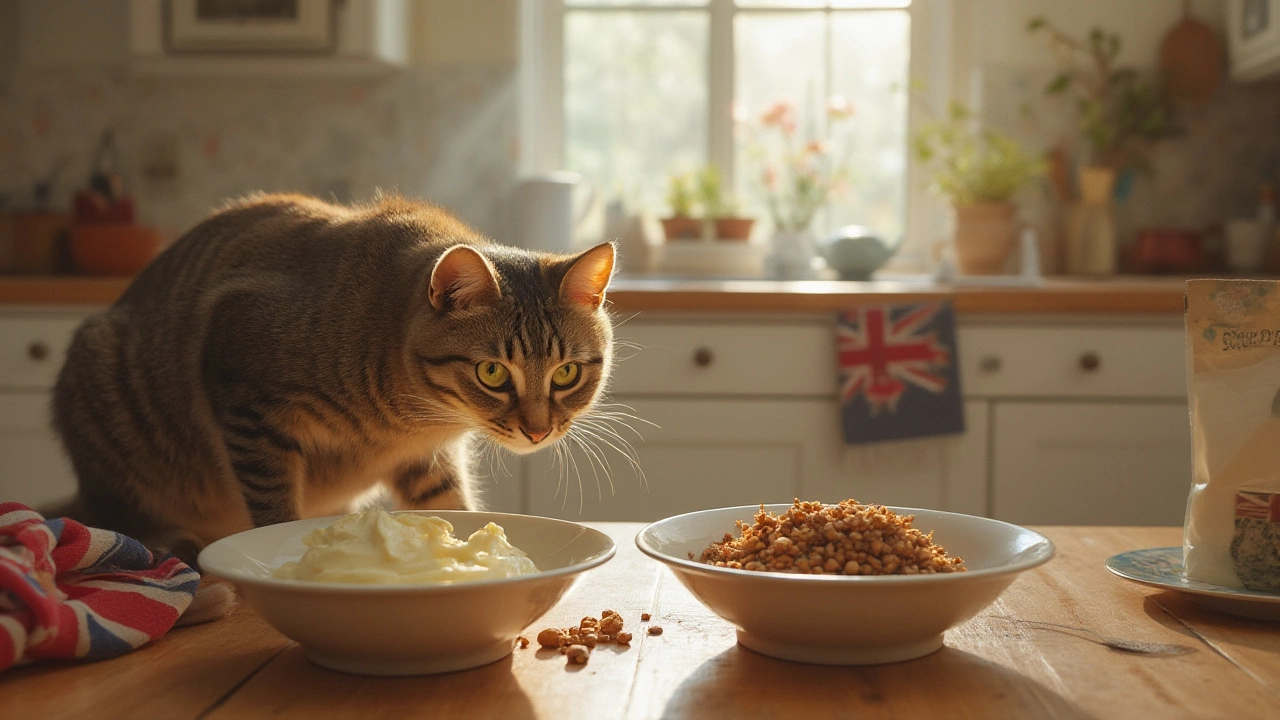Pate Cat Food: What to Look For and Why Cats Love It
If you’ve ever watched a cat sniff a tin of pate and then devour it in seconds, you know there’s something special about this texture. Unlike dry kibble, pate is smooth, moist, and packs a punch of flavor that most felines can’t resist. But not all pates are created equal. Below we break down the key things to check, the best brands on the market, and simple ways to serve wet food so your cat stays healthy and satisfied.
Why Pate Beats Dry Food for Many Cats
First off, pate has a high moisture content—usually around 75‑80%. That extra water helps keep your cat’s urinary system running smooth, which is especially important for indoor cats that don’t drink a lot. The soft texture also makes it easy for older cats or those with dental issues to eat without pain.
In addition, a good pate includes real meat as the first ingredient. This means more protein per bite, which fuels a cat’s hunting instincts even when they’re just lounging on the sofa. Protein is the building block of a cat’s diet, so a meat‑first recipe supports muscle health, skin, and coat shine.
How to Choose the Best Pate Cat Food
When you’re staring at a shelf of tins, keep these three checkpoints in mind:
- Ingredient list: Look for real chicken, turkey, salmon, or beef right at the top. Avoid vague terms like ‘meat meal’ or ‘animal by‑product’ unless the brand explains exactly what that is.
- AAFCO compliance: The label should say the food meets the nutritional levels set by the Association of American Feed Control Officials. That’s a quick way to know the formula is balanced for cats.
- No unnecessary fillers: Corn, wheat, and soy are common cheap fillers. They don’t add nutritional value and can cause sensitivities for some cats.
Brands that consistently score high on these points include Hills Science Diet, Royal Canin, and Purina Pro Plan. If your cat is picky, you might need to rotate flavors—chicken, tuna, or rabbit—to keep their interest alive.
Another tip: check the expiration date. Wet food loses quality faster than dry kibble, so buying in smaller packs ensures freshness.
Now that you know what to look for, here’s how to get the most out of pate feeding.
Serve at room temperature. Cats often reject cold food straight from the fridge. Warm the tin for a few seconds in warm water or let it sit out for 15 minutes. The aroma becomes stronger and more appealing.
Mix with a little water or broth. If your cat is on a low‑calorie plan, diluting the pate can stretch servings without sacrificing taste. Use a low‑sodium chicken broth for extra flavor.
Use a shallow dish. A wide, shallow bowl lets the cat see the food and makes it easier to lap up. This can also reduce whisker fatigue, a common annoyance for cats with long whiskers.
Finally, keep an eye on portion sizes. Wet food can be calorie‑dense, so follow the feeding guide on the can but adjust based on your cat’s age, weight, and activity level. Overfeeding can lead to weight gain, while underfeeding may cause nutrient gaps.
In short, pate cat food is a tasty, moisture‑rich option that supports urinary health, dental comfort, and overall nutrition. By choosing meat‑first, filler‑free recipes and serving them the right way, you’ll keep your feline friend purring for many meals to come.
Pate vs Shredded Cat Food: Which Texture Is Best for Your Cat?
Get the real story on pate versus shredded cat food. Learn what makes each texture unique, how cats react, and tips to make the healthiest choices for your furry friend.
